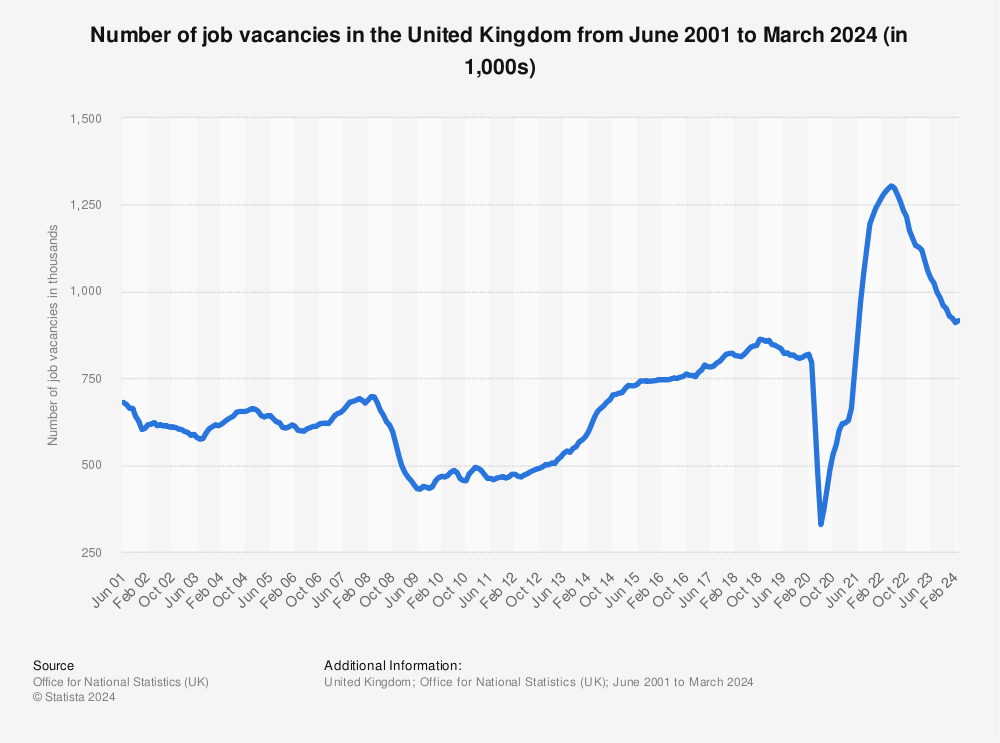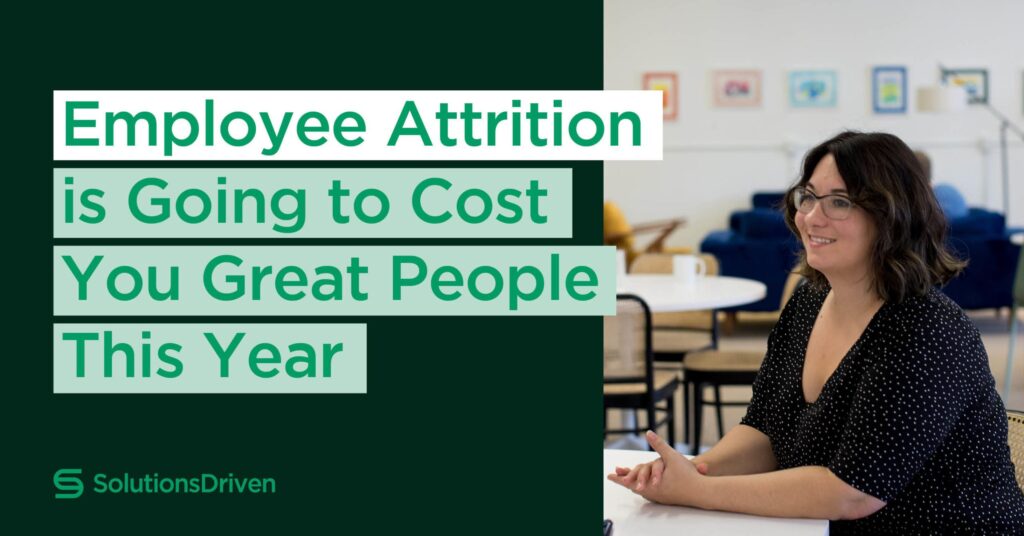Last year, we had a few clients who said “we’re not going to be hiring this year, our team is complete, keep in touch and we’ll talk in 2022.”
Guess what?
We spoke to most of them in 2021.
Our clients weren’t wrong. Their team was complete and if things had stayed the way they were, they wouldn’t have needed to hire. But nothing stayed the same in the job market in 2021.
People left jobs in their droves, spurred on by changes in their priorities, strong business growth, and a shortage of talent. And for many companies, that meant employee attrition rates went through the roof.
Take these statistics from The Office for National Statistics for example. In the UK the number of job vacancies in the United Kingdom reached a record high of almost 1.25 million in the three months to December 2021, around 658 thousand more vacancies when compared with the same period in 2020.

Those aren’t all new job openings being created. It’s also caused by people leaving their current positions. Which is partly because it’s a candidate-driven market and people are feeling confident due to the high number of job openings.
It’s a vicious circle for employers.

And then there’s natural employee attrition that happens every year.
People who decide to retire or retire early, employees with health conditions being out for a long time, people going on maternity leave and much more. When you consider up to 18% of women could leave their jobs due to a lack of menopausal support, the issue becomes even bigger. Those figures are for the UK, but with most of the world providing similar support to the UK, this could become a problem for every business.
When It Comes To Employee Attrition, Forewarned Is Forearmed
There will be people reading this thinking “I have a strong team, I don’t need to worry about attrition”. If that’s you, you’re probably in for a rude awakening. Even in Solutions Driven we’ve had people leave who we thought were safe.

But knowing that your employees have their eyes open to changes means you’re not going in with yours closed. Even if you have a loyal team, it can’t hurt to have plans in place to mitigate people leaving or thinking about leaving, and to fill positions when people do inevitably leave.
1. Have a Backfill Plan For Employee Attrition
The best way to do this is to identify your “business critical positions”. Which roles are absolutely vital for your business to keep running. For some companies, they could get along quite well without a COO for a while but the Chief Technical Officer leaving would be a total disaster.
Everyone is different and not one size fits all, so take a bit of time identifying these roles.
Then look at whether you will need to look internally or externally for these positions. Many businesses will have people ready to step up, but plenty won’t.
If you’ll be hiring internally, look at how you can prepare the next person in line through training or shadowing opportunities.
If it’s external, think about building a pipeline of talent that you can reach out to if the time comes.
2. Work On Your Internal Mobility
One of the main reasons people give for leaving a company is that they don’t see how they’re going to progress, or they feel they’re going nowhere.

We’ve written an piece on this, but the main points were:
– Get buy in from the top so everyone is onboard with people moving roles if it’s the right thing for them and the company
– Set out the attributes for every role so you’ll know what you’re looking for when the time comes
– Map your internal talent so you have inventory of skills and qualities
– Improve career development plans
– Make jobs visible internally
– Promote lateral mobility for those who might want to move skillsets
– Have a backfill plan (see above)
– Ensure internal plans are taking diversity into account by encouraging and mentoring diverse employees for mobility success
– Be aware that change won’t happen overnight
3. Keep On Top Of Market Changes
The majority of top candidates we talk to right now are also involved in other hiring processes. The majority of hiring managers are struggling to attract talent. But in both cases, they’re surprised at the situation they find themselves in.
After all, it’s not that long ago that job seekers were struggling to find work as companies were in shutdown or preservation mode, and hiring managers could have the pick of top talent that other companies let go.
Those in the recruitment industry, or who keep on top of recruitment trends, knew that couldn’t last though and followed the data that said there would be a huge skills shortage when the world opened back up again.
Either doing your own market research or working with a partner who has that capability can help you mitigate challenges in the future by preparing thoroughly for them.
4. Improve Your EVP And CVP
EVP: Employee Value Proposition
CVP: Candidate Value Proposition
By improving your EVP, the chances are that you’re going to lose less great people. EVP can be made up of many different things, it’s not just salary and benefits. Things like having a great learning and development culture can make people see that working with you can strongly benefit their career.
A good diversity and inclusivity program will make people feel like they belong and are appreciated in their workplace. Add in initiatives that help your employees enjoy a good worklife balance and benefits like healthcare and gym memberships that allow them to feel their best and your top team members are going to want to stick around.

Your CVP encourages potential candidates to join your business, so that even if you do experience a period of high employee attrition, you’ll find it easier to attract candidates.
Part of this will be your EVP but part of it will be how good your onboarding process is, how you conduct interviews, the way you engage with candidates, and how your company is presented to the wider world.
After all, if you don’t have the bandwidth to engage properly with the best candidates, take forever to interview them, and have a bad company website and reviews, the chances are they’re going to walk away before they even join you.
5. Utilise Market Insights
No matter what you do, as we said before, you will lose people. And right now, it’s not always easy to fill positions. Which is why you need to know what the market looks like when you do need to hire.
Where is top talent located? Is the talent pool available in your location or will you need to look remotely? How is your salary banding comparing to the current market rates?
After all, in the US 68% of companies are planning wage rises in 2022, especially in higher salaried roles. And in Italy workers find good relationships with their managers and colleagues more important than salary when picking a workplace.
Knowing this information ahead of a search helps guide you on where and when you need to be looking if employee attrition rates do begin to bite.
Of course, not all companies have the bandwidth to implement these changes and not everyone will be able to get these market insights and engage top talent. Talent teams have grown smaller and the market more difficult to engage.
That’s where we can come in. If you need help with finding the best top talent to replace employees you lose, get in touch with our recruitment experts today.






